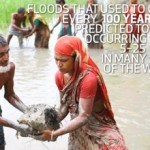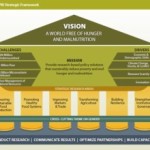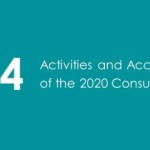Stories of nongovernmental organizations (NGOs) providing emergency relief in the aftermath of natural disasters and other humanitarian crises are familiar parts of the news. When NGOs such as CARE or Mercy Corps support medical services in South Sudan or bring food to people affected by Typhoon Haiyan in the Philippines, we are not surprised. Less appreciated are longer-term NGO efforts to alleviate poverty, food insecurity, or other problems in developing countries. The two NGOs just mentioned, and others, have worked not only to provide immediate aid to developing countries but also to build these countries’ resilience.
Resilience includes the ability to withstand shocks and stress, but it is more than that. Resilience also means being able to adapt to change and remedying, over the long-term, the conditions that create vulnerability to shocks and stress. NGOs can foster these three elements of resilience at the level of individuals, households, communities, or larger units.
Despite the efforts of groups such as CARE, Mercy Corps, Catholic Relief Services, Concern, Welthungerhilfe, and World Vision, NGO resilience-building faces significant obstacles. For example, long-term remedies for vulnerability, especially at the national level, may involve changes that NGOs cannot bring about by themselves. Governments or other important actors might need to take action.
Another obstacle is the form NGO funding can take. Funding that is short-term and directed toward projects that can demonstrate quick impact does not allow for sustained efforts to build adaptive capacity and reduce vulnerability. Funding can also create an obstacle to resilience building if donors require that projects fit a certain template, even when it is not necessarily appropriate to a particular situation.
Given these obstacles and other considerations, President Timothy R. Frankenberger of Technical Assistance to NGOs (TANGO) International; TANGO Senior Researchers Suzanne Nelson and Laurie Starr; and Cornell University Professor Mark A. Constas have identified five steps NGOs should take in pursuing resilience-enhancing programs in their conference brief:
- When designing programs, NGOs should identify which leverage points to target in order to achieve the desired outcomes. Designing resilience programs for a given system (a household, community, or other unit) should also include a comprehensive assessment of the larger context affecting the system.
- NGOs should invest in monitoring and evaluation of resilience. This will require NGOs to find new sources of funds—the UK Department for International Development’s Building Resilience and Adaptation to Climate Extremes and Disasters is one such source.
- Programs should take into account different sectors within a system and be designed for the long term. This approach might involve pursuing multiple projects and complementary strategies in partnership with other actors.
- NGOs should build partnerships with donors, UN agencies, and governments. These partners frequently can exert greater influence on a national or regional level than NGOs. Collaborative efforts by NGOs and these other actors will be more effective in reducing large-scale vulnerability than action by NGOs alone.
- Resilience strategies should have a regional—that is, multinational--scale. This will allow NGOs to address larger issues that affect a particular country’s resilience, such as cross‐border conflicts, large‐scale natural disasters, and migration across borders.





